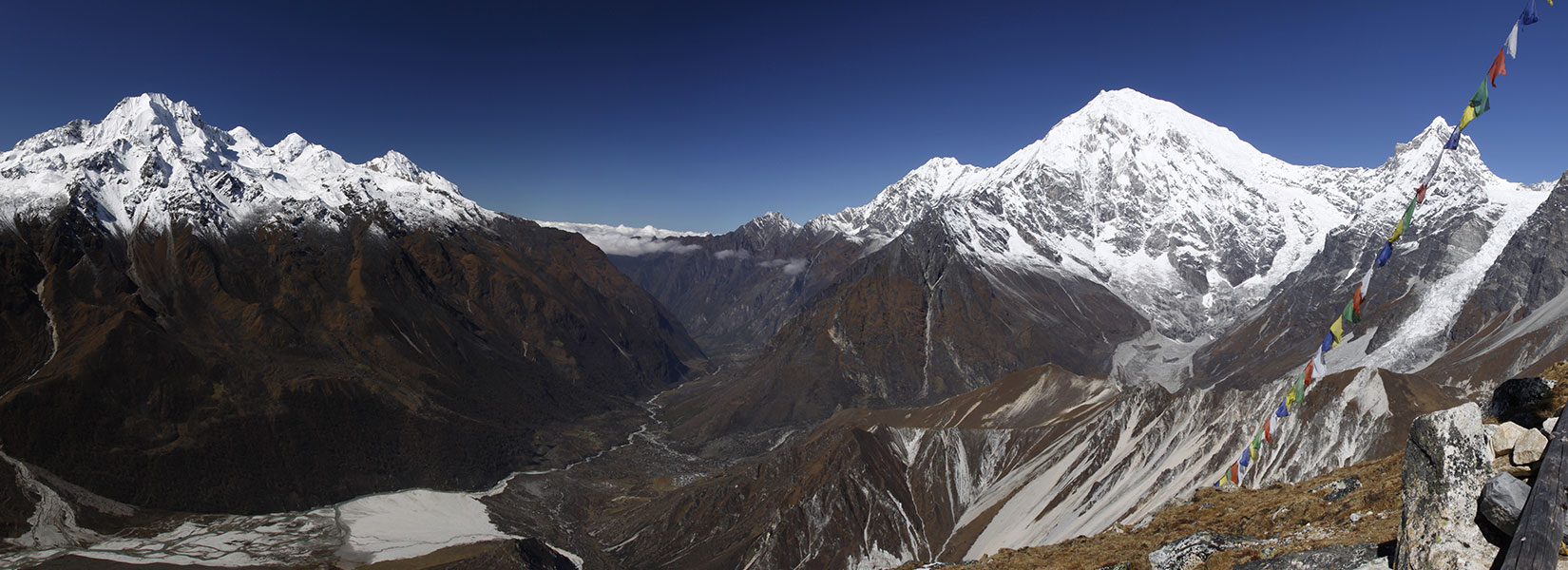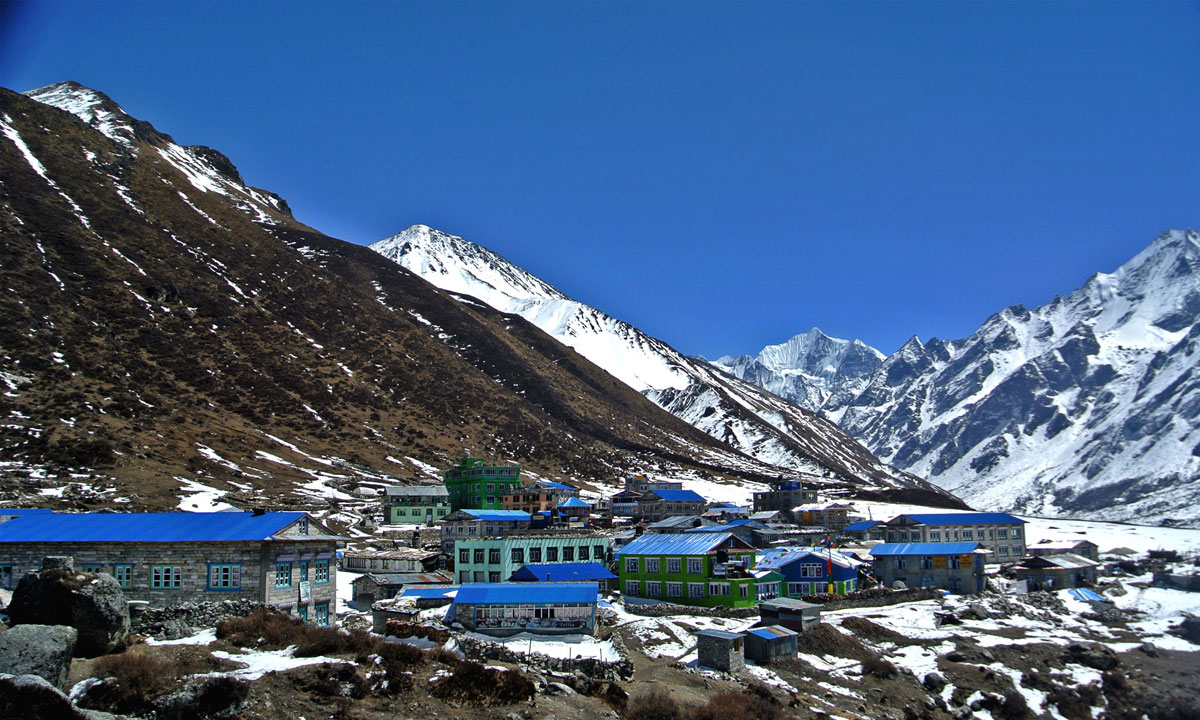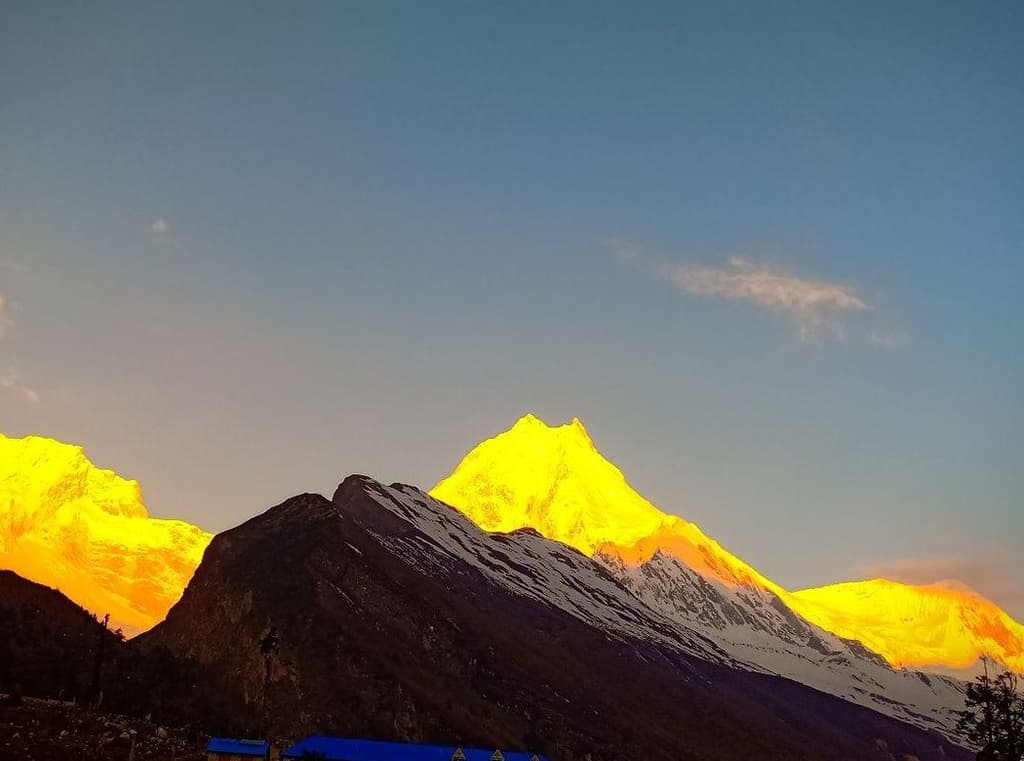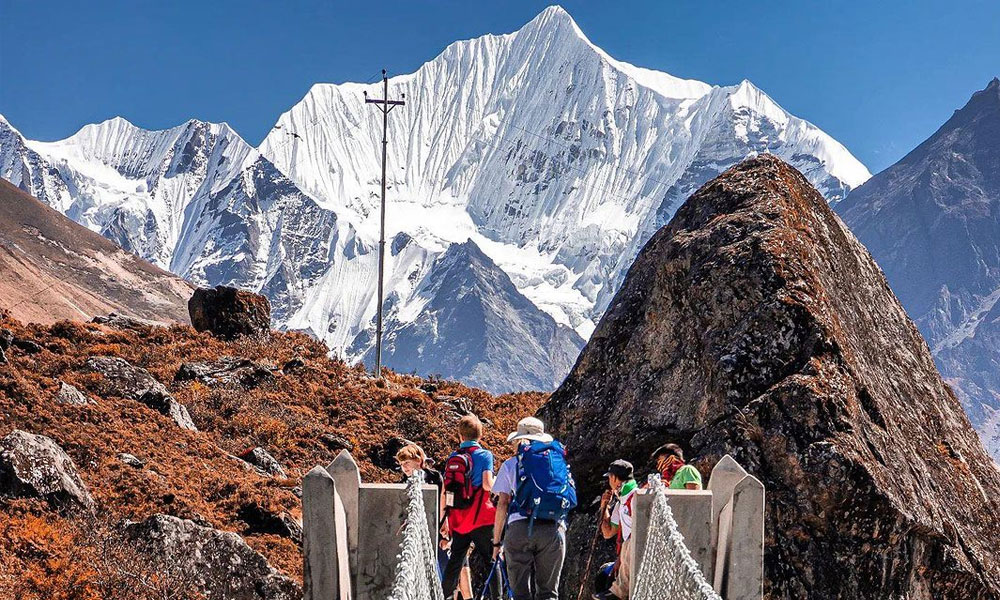 Nepal is a multi-cultural and multi-ethnic country, and the country boasts huge prospects for tourism. From the inner Terai lowlands to the Himalayas' highlands, Nepal has everything to attract tourists. Whether you choose a cultural and spiritual tour to Lumbini, Kathmandu Valley, and Chitwan or embark on adventurous treks to Everest Base Camp and Annapurna Base Camp, Nepal has it all.
Nepal is a multi-cultural and multi-ethnic country, and the country boasts huge prospects for tourism. From the inner Terai lowlands to the Himalayas' highlands, Nepal has everything to attract tourists. Whether you choose a cultural and spiritual tour to Lumbini, Kathmandu Valley, and Chitwan or embark on adventurous treks to Everest Base Camp and Annapurna Base Camp, Nepal has it all.
Amongst all these destinations, Langtang Valley is one of Nepal's most intriguing trekking destinations. Nestled in the heart of the Himalayas, it is a dream for trekkers and nature enthusiasts. The Langtang Valley Trek is a unique adventure that blends hiking through breathtaking landscapes, rich cultural settlements, and mystic Himalayas. This journey promises unforgettable memories with a certain price, which is physical, mental, and budget demands.
Langtang Valley Trek Cost is an overall calculation of the total cost required for the trek. Here, we will uncover what factors cost you the most budget and what does not. It is essential to make a strategic plan for embarking on this tour and look for certain loopholes to minimize the budget. We are here to clear everything regarding the budget allocation for the Langtang Valley Trek.
Let’s explore this in detail.
Understanding Langtang Valley Trek
As mentioned above, Langtang Valley Trek is a unique and rewarding trekking experience. The journey is inside Langtang National Park in the Rasuwa District of Northern Nepal. Basically, the trekking package is around 7 to 10 days long, which is budget-friendly and efficient compared to those of Everest Base Camp and Annapurna Base Camp.
Langtang Valley Trek is a unique opportunity to explore the natural and cultural richness of the Langtang Region. The flora and fauna preserved inside the Langtang National Park offers one of the awe-inspiring experience. Similarly, the snow-capped peaks add spice to the journey, including Langtang Lirung, Langtang Ri, Shisapangma, and other peaks. Moreover, the Tamang Heritage Trail, Cheese Factory, and Kyanjin Gompa are some places you should not miss during the trek.
Langtang Valley Trek starts with a long ride from Kathmandu to Syabrubesi. During the ride, trekkers will find themselves enjoying the beauty of the countryside locations of Nuwakot and Rasuwa, including Trishuli, Battar, Bandre, Kalikasthan, Dhunche, and Bhalu Kharka. The lush green forests and hills, terraced fields, Trishuli River, and the hanging rock cliffs above the black-topped roads offer an adventurous experience.
Upon reaching Syabrubesi, the official trek begins through a remote and uphill trail. It stretches to Lama Hotel, where trekkers make their first stop. From Lama Hotel, trekkers will continue their trekking to Langtang Village, enjoying the scenes of Langtang's streams, waterfalls, and mystic mountain ranges. The trail leads trekkers to Langtang Village, which has been rehabilitated after the massive destruction from the 2015’s 7.8 Magnitude Earthquake.
As trekkers leave Langtang Village, they will reach Kyanjin Village, where the famous and ancient Tibetan Monastery, Kyanjin Gompa, resides. The gompa signals the huge respect and tribute to Buddhism practiced in the region for centuries. Trekkers can involve in exploring the Gompa, Buddhist villages, and also German Cheese Factory. The scenery of the yak pastures and the mystic mountain ranges soothes the exhausting journey. After exploration, trekkers must follow the same trail to Langtang Village, Lama Hotel, and Syabrubesi before they ride back to Kathmandu.
Factors Affecting the Langtang Valley Trek
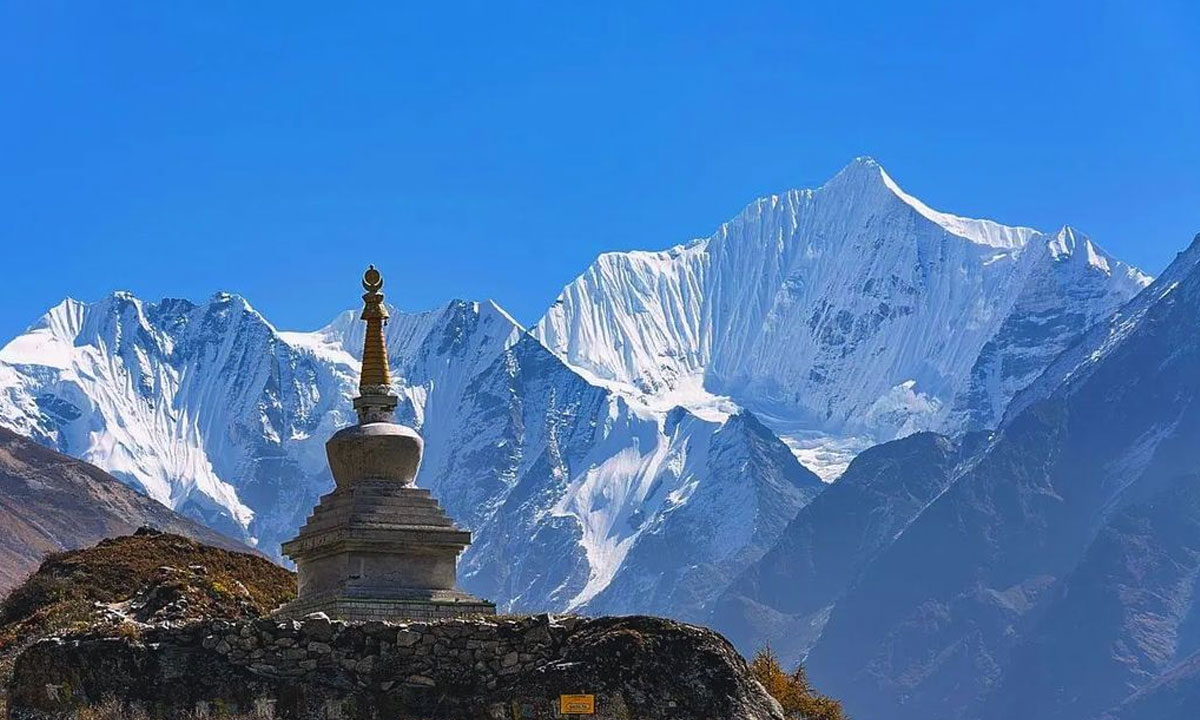
We have learned what Langtang Trek is and how to reach there. But reaching there is not an easy feat - there must be strict preparation from all sides, including physical and mental health, gear and equipment, guides and porters, and many more. The budget is one of the most important things to prepare for the Langtang Valley Trek. Trekkers must know how much Langtang Valley Trek Costs and prepare their budget accordingly.
Here are certain factors that contribute to the Langtang Valley Trek Cost. Read it thoroughly to make proper plans for your journey:
Permit Costs
Permits are one of the most important things every trekker must obtain before embarking on the Langtang Valley Trek. There are one permits required for this trek, and they are:
- Langtang National Park Entry Permit
Langtang National Park Entry Permit: The Langtang Valley Trek is situated within the premises of the Langtang National Park. Since it is a protected land area established to conserve the alpine vegetation and wildlife of the Lantang Region, no one is allowed to enter without special permission. The reason trekkers must acquire this license is due to this.
Trekkers can acquire the Langtang National Park Entry Permits from the Nepal Tourism Board or Trekking Agencies Association of Nepal (TAAN) in Kathmandu. If they do not purchase these licenses in Kathmandu, there is an Army Checkpost in Dhunche, where trekkers can buy the required logistics.
Considering the Langtang Valley cost of the Langtang National Park Entry Fees, there are three categories. The first one is set for foreign trekkers, which costs NRs. 3000 per person. Similarly, the second one is for the SAARC Nationals, which costs NRs. 1000 per person. Last but not least, the third one is for Nepalese Trekkers, which costs NRs. 100 per person.
TIMS Card: TIMS (Trekkers’ Information Management System) is another crucial license required for the Langtang Valley Trek. It came into action in 2008 in Nepal, and it is one of the reliable methods of keeping track of trekkers’ activities in Nepal.
To get your TIMS Card, you must pay the fee of Rs. 2000 per person for foreign trekkers. For SAARC (Citizens of South Asian countries), the fee is only NRs. 1,000 per person.
How To Get Permits For The Langtang Valley Trek? Necessary Documents
There are several ways to get the Langtang Valley Trek. Here are some of the necessary documents you need to submit to acquire these permits:
- Copies of valid passports
- Copies of Nepal Visa
- Copies of Passport Sized Photographs
- Permit Fees
- Insurance Paper
- Itinerary from your trekking agency
Accommodation Cost
The accommodation service is one of the main factors contributing to the Langtang Valley Trek Cost. There are three types of accommodation services that you can rely on during the trek. The first one is a hotel available in Kathmandu before the trek starts and in Syabru Besi. It costs anywhere around $10 to above. Hotels have amenities like attached bathrooms, 24/7 electricity & internet facility, and spacious rooms.
Similarly, tea houses are the most common accommodation available during the Langtang Valley Trek. Staying at a tea house costs anywhere from $5 to $15 per night. You can get shared bedrooms, bathrooms, and electricity at tea houses.
Last but not least, trekkers can set up camp to stay overnight at their stops. No costs are attached to camping during the Langtang Trek, but trekkers must carry essential equipment, such as gas canisters, utensils, and food. Also, there is a high risk of danger in camping outside in the open surrounding. Many trekking agencies offer the service of camping during the trek. But it all depends on the package and itinerary provided.
It's recommended to book your accommodation in advance, especially during peak trekking seasons, to secure the best rates.
Food and Drinks
Food is another major contributor to the Langtang Valley Trek Cost. While you embark on a multi-day trek to the Langtang Valley inside Langtang National Park, food and water are the only energy sources. But you must pay a certain amount for the food you eat during the trek. Several tea houses and guest houses on the trail offer food and snacks.
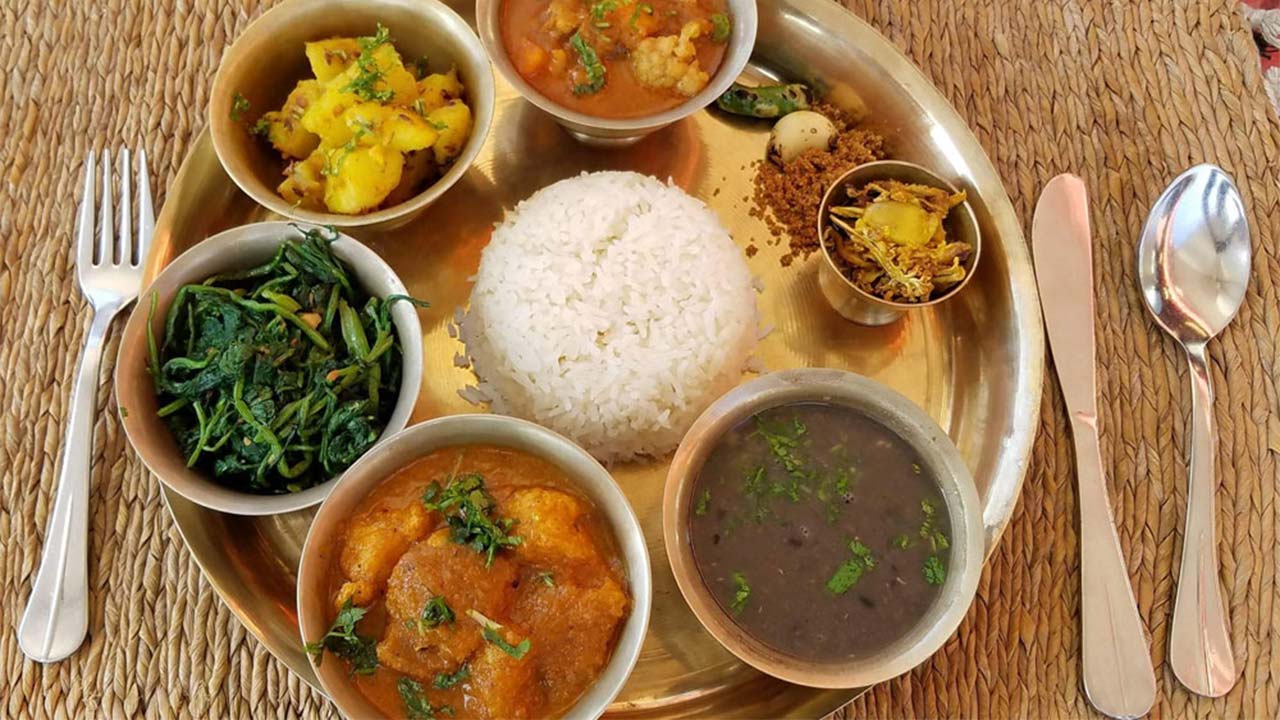
Looking at the food cost during the Langtang Valley Trek, the average cost will be around USD 10 to $25 per day. It all depends upon what and where you eat your food. If you are in Kathmandu before starting the trek, you must allocate a slightly more budget for food since the price might be slightly higher. Similarly,
After you set off for the Langtang Valley Trek, the availability of the food option decreases. Tea houses along the trail offer Dal Bhat Tarkari and other dishes, which can cost you anywhere from $2 to $5 per meal. Similarly, they also offer other dishes, including momo, chowmein, fried rice, tea, coffee, and soup on their menu. For such food, you will be spending around USD3-USD6 per day.
The trek's cost includes three daily meals—breakfast, lunch, and dinner. The menu typically consists of local and international dishes to cater to various tastes. Remember that the cost of meals tends to increase as you ascend to higher altitudes due to the logistics of transporting supplies. It's advisable to carry energy-rich snacks and stay hydrated by purchasing bottled water or water purification tablets.
Transportation
It is another major contributor to the cost of Langtang Valley Trek Cost. To start the Langtang Valley Trek, you must reach Syabru Besi first. To reach there, the only option you have is by road. Regarding a ride to Syabru Besi, there are several options to get to the place. They are by public/tourist bus, private rented jeep, or taxis.
The means of local transportation, such as buses, are the cheapest ones. It takes around 7 to 10 hours to reach Syabru Besi from Kathmandu, and the average cost of the local bus ticket is around NRs. 300 per person, which equals around USD 2.75. The price is the same when you return to Kathmandu from Syabru Besi.
The next option you have is a tourist bus, which is slightly more expensive than public buses. Your trekking agencies mostly provide tourist bus services for safe transportation. So make sure they are within the cost includes of your package or not. Traveling via tourist buses costs you around NRs. 1000 to 1500 per person.
Moreover, the taxi services to Syabru Besi from Kathmandu will cost you around NRs. 7000 to 10,000 per person. But you can always negotiate for the best price. It is very common to face rejection from cab drivers to such long-distance destinations since the chance of getting passengers while returning is very minimal.
On the other hand, traveling via private rented jeep will cost you around Nrs. 800-1000 (US $8- $10) per person. On average, 7 to 8 passengers can fit inside a jeep, so the price will be divided, which comes to be cheaper.
Remember, the journey to Langtang Valley begins in Kathmandu and involves transportation to the trailhead. Whether you choose a public bus or a private vehicle, transportation costs should be factored into your budget. The road conditions can vary, affecting travel times and costs.
Guided or Independent Trek

Guided treks are the highly recommended trekking option for Langtang Valley Trek. Since no one can go for a solo trek in any region within Nepal, trekkers must hire a certified guide. It is also very beneficial for the trekkers as safety is ensured.
Trekking agencies that operate the Langtang Valley Trek offer guide and porter services. And they come with different price tags. Certified and experienced guides can cost anywhere from $25 to $35 per day. In some cases, highly- experienced guides can charge you up to $50 per day.
Similarly, hiring a porter is another prioritized thing in the Langtang Valley Trek. Usually, porters carry your heavy loads and gear during the trek to make you comfortable. But their service comes with a certain price, which costs around $20 to $30 per day, depending upon their experience and the level of service they offer.
Choosing between a guided or independent trek is a significant decision that affects the overall cost. But since April 2023, only guided treks have been allowed in Nepal, so there is no room for dilemma. Opting for a guided trek provides you with the expertise of a local guide familiar with the terrain, culture, and language. While this comes at an additional cost, it enhances your overall experience by providing valuable insights and ensuring your safety.
Gear And Equipment

The Langtang Valley Trek is a moderately challenging trekking package, so there should be enough preparations with gear and equipment. Several trekking items, such as trekking poles, hiking boots, and other materials, are essential for trekking in the Langtang region. And they come with several price stages - the cost of trekking gear differs from the quality of products.
Here are the lists of some trekking gear with their prices, which are highly required for the Langtang Valley Trek. Let's see in detail:
| Trekking Boots | $50 to $150 |
| Trekking Pants | $20 to $60 per pair |
| Fleece Jacket | $30 to $70 |
| Down Jacket | $70 to $150 |
| Trekking Poles | $20 to $50 |
| Backpack | $50 to $150 |
| Sleeping Bag | $50 to $150 |
| Sleeping Pad | $20 to $80 |
| Trekking Shirts and Base Layers | $15 to $40 |
| Rain Jacket | $40 to $100 |
| Gloves and Hat | $10 to $30 each |
| Socks | $5 to $20 per pair |
| Sunglasses and Sunscreen | $10 to $30 |
| Headlamp | $20 to $50 |
Looking at all the essential gear and equipment, the average cost of the required trekking items will cost you anywhere from USD 500 to USD 700. But remember, the quality of the products highly influences the prices. For example, if you buy a NorthFace jacket, it might cost you way more expensive than the normal ones. In the meantime, your comfort is equally important while wearing the clothes and using the gear, just like the quality of the products.
How To Minimize The Langtang Valley Trek Cost?
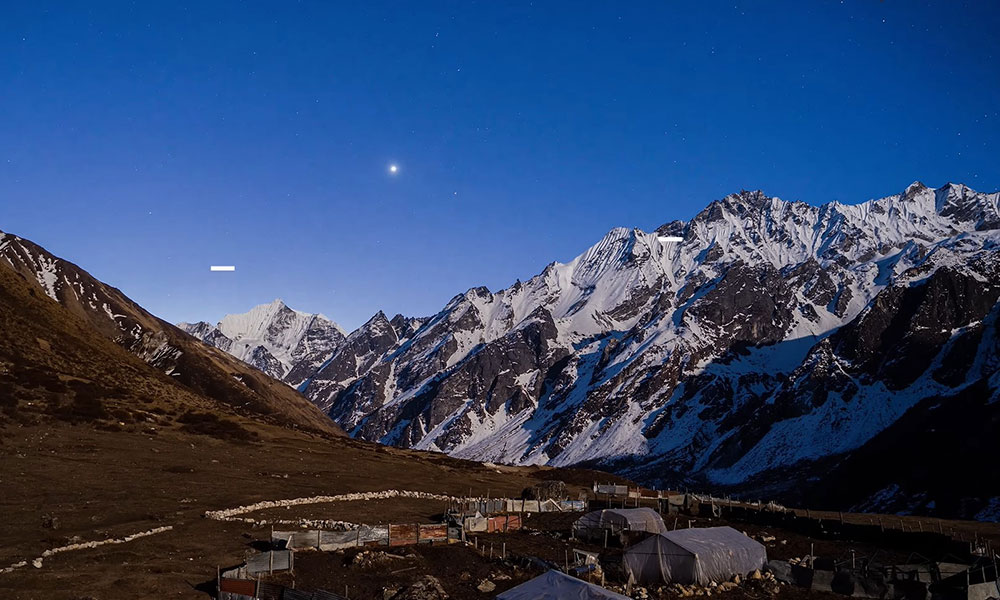
There are several ways to minimize the Langtang Valley Trek Cost. To make the most of your Langtang Valley trek, here are some budgeting tips to consider:
Off-Peak Seasons:
Off-peak season treks are one of the efficient ways to minimize the budget for the Langtang Valley Trek.
Traveling during the off-peak seasons (Monsoon and Winter) can lead to cost savings as accommodation and transportation rates tend to be lower. Similarly, the cost of the whole package gets cheaper during this time.
But remember, there is a huge thing you should compromise while you embark on off-peak season treks. The off-peak season treks are considered very harmful and dangerous for humans. But with proper preparation and guidance, it can be done, but trekkers are highly encouraged to remain cautious.
Group Travel:
Group Travel is another efficient way to minimize the trekking cost. While traveling with a group, the costs of accommodation, transportation, food, and even the package get divided. This means only a partial amount of money will be on your part. This can help in enjoying the budget-friendly Langtang Valley Trek.
Pack Lightly:
While you pack your gear and equipment for the Langtang Valley Trek, you must not overpack the items. It might physically exhaust you, which will ultimately hamper your physical health and even pose the dangers of altitude sickness and related illnesses. Trekkers are recommended to carry only essential things such as thermal clothes, backpacks, sleeping bags, boots, and others.
Rent Gears:
If you are looking for minimizing the cost of your Langtang Valley Trek, renting gears can help you. While buying quality gear, such as sturdy hiking boots, waterproof/windproof jackets, insulins, and sleeping bags, might cost you hundreds of dollars, renting them can be a good option.
Renting gear does not require expensive budget allocation. You can rent the required trekking items at a reasonable price that caters to all your needs and expectations. You can find numerous gear stores in Thamel, where you can buy and rent the essential items for the Langtang Valley Trek.
Research Itinerary | Choose The Best Deals
Before embarking on the Langtang Valley Trek, trekkers must go through online research regarding the package. It is recommended to travel during the festival times, when trekking agencies offer huge discounts and deals. For example, if you book your package in October (the month of Dashain), there is a high chance of getting immense discounts. Similarly, trekking organizations offer several deals and offers during the New Year, Christmas, and other festivals.
When planning your Langtang Valley Trek, meticulous research is your best ally. Study the trek's route, attractions, and accommodations. Opt for a well-balanced itinerary that allows you to experience the trek's highlights without rushing. Consider choosing local guides and operators offering reasonable packages without skimping safety and services.
You may also like:
● Langtang Gosainkunda Trekking
Frequently Asked Questions
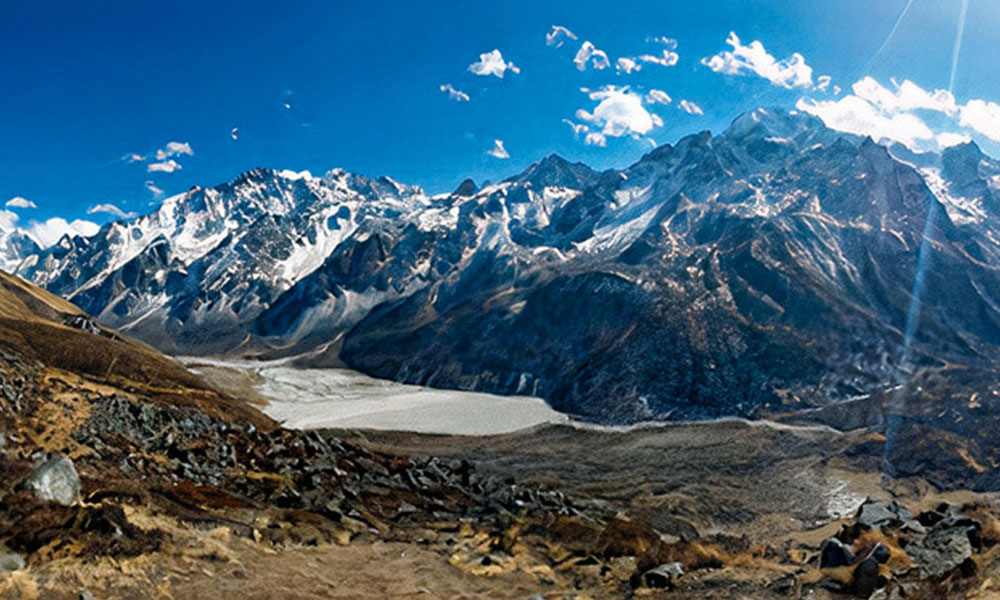
What is the typical cost of the Langtang Valley Trek?
The average cost of the Langtang Valley Trek is around $400 to $600, excluding the gear and equipment. But the average cost of this trek depends on factors like trekking agency, duration, personal preferences, and the month of year.
What does the trek cost usually include?
The Langtang Valley Trek Cost usually includes permits, accommodation, guide & porter services. Similarly, the trek cost covers other amenities like meals and domestic transportation.
Are there any additional costs not covered in the package?
Most of the time, the cost included is portrayed beforehand. But in some cases, the budget for expenses like international and domestic transportation, insurance, snacks, personal gear, and tips for guides & porters are not included. You should be clear with the terms of the cost, which includes and excludes, before booking the package.
Can I do the Langtang Valley Trek independently to save money?
Solo trekking was one of the efficient ways to save money before. But now, it has been banned, and no regulations and logistics related to independent trekking have been enacted since April 2023. So, the answer is 'No,' you cannot embark on the Langtang Valley Trek to save money.
Is it necessary to hire a guide and porter?
Yes, it is essential to hire guides and porters since they help in navigation, carrying your loads, and safety. Guides provide local insights, and porters carry your heavy load. Hiring them also means ensuring your safety during the travel.
How much should I budget for meals and drinks during the trek?
Allocating a budget of around $10 to $25 daily for meals and drinks is necessary. Prices may increase at higher altitudes due to the remote locations.
Are any entry permits required for the Langtang Valley Trek?
Trekkers need to obtain the Langtang National Park Entry Permit and TIMS (Trekkers' Information Management System) Card for this trek.
Are there cheaper seasons for the Langtang Valley Trek?
Most of the time, off-peak seasons, including Monsoon and Winter, are cheaper than peak seasons (Spring and Autumn). The price is down at a massive rate during these times.
Do I need to book the trek in advance?
It is possible to book the Langtang Valley Trekking package after arriving in Kathmandu. But it is recommended to book your trek in advance. Especially if you are traveling during the peak seasons, you might run out of permits, accommodation, and transportation services.
Can I negotiate the trek cost with trekking agencies?
There is always room for negotiating the cost. There is room for negotiation, including the fees of guides and porters and the exclusion of certain amenities you would not like to cherish.

